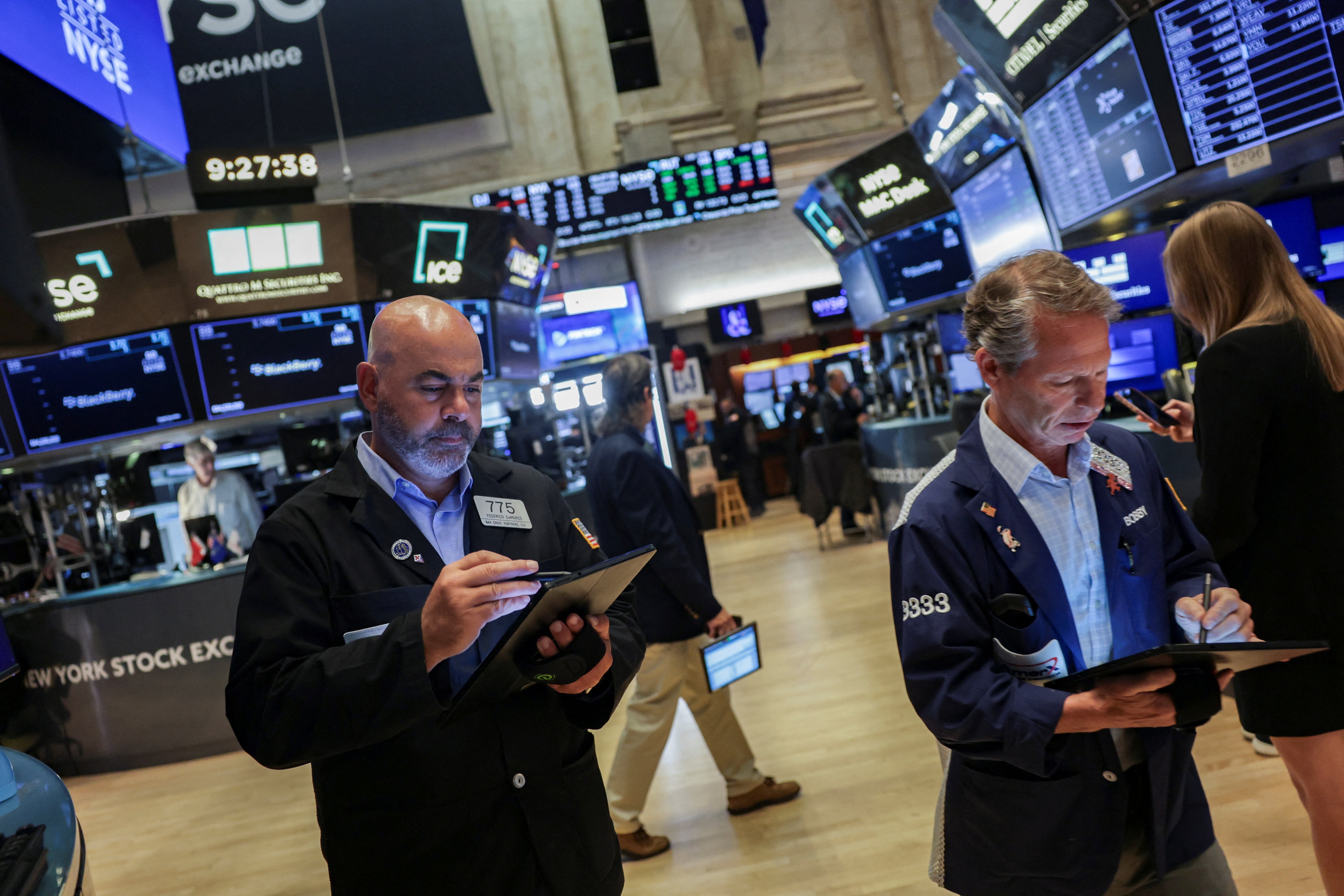Blockchain is in from the cold — and stablecoins are set to change the financial system forever

Blockchain is back in from the cold after a turbulent 2022, and its impact on the world of finance is set to be far-reaching.
Image: Getty Images/iStockphoto
Stay up to date:
Tech and Innovation
- After a turbulent 2022, blockchain and stablecoins are coming back into the limelight — this time with the involvement of major financial institutions.
- This marks a step-change in the world of finance, and is set to fundamentally alter how we exchange value.
- The coming change could be just as disruptive as the emergence of the internet.
Over the past 12 months, more types of financial activity are migrating to the blockchain as the underlying technology matures and sensible regulations take effect in major global jurisdictions.
Payments, credit intermediation, trade settlement and other transactions are increasingly being carried out via the new internet financial system due to its unprecedented speed, cost-effectiveness, transparency and programmability.
This growing embrace of blockchain is reflected in the strong interest among traditional financial firms. In just the last few months, BlackRock, JP Morgan, Standard Chartered, HSBC, Goldman Sachs and other major financial institutions have all announced projects that deepen their involvement with blockchain. Bank of America predicts blockchain infrastructure may reshape how value is exchanged and stored — not just in finance, but in every industry. The World Economic Forum expects 10% of global GDP could be tokenized and stored on the blockchain by 2027.
Japan, Singapore, Hong Kong, the UK and Europe have already enacted legislation to govern digital assets, and other markets are following closely behind.
Blockchain in from the cold
It is no coincidence that this happening now, despite the turmoil this sector faced during 2022. These traditional finance powerhouses and policy makers see something in blockchain that makes it compelling.
At its core, blockchain networks provide a new operating system infrastructure layer for the internet that is ideal for handling applications where trust and data and transaction integrity are crucial. This infrastructure is poised to eat the world of money, just as other forms of software devoured almost every analog industry a generation ago by making them faster, cheaper and easier to consume while reducing barriers to entry.
Stablecoins – blockchain-native versions of fiat currencies like the US dollar – are the critical element that underpin this new internet financial system.
Having founded and run internet technology businesses for nearly 30 years, I believe that the continued migration of finance to the blockchain will be the next wave of the decades-long trend of digitized creative destruction unleashed by the original internet in the 1990s. This time, the social and economic impact could be even larger.
Trillions of dollars of real economic activity could take place on the internet financial system in the next few years.
The advantage of blockchain networks
Finance is better on blockchain networks. Building a new financial system directly into the fabric of the internet unleashes benefits on multiple levels. First, it can give individuals more autonomy over their money, property and digital identity. With the emergence of blockchain networks, the way people interact with the internet is evolving from browser to social to wallet. This gives people more control over their financial lives and personal data.
Second, stablecoins on blockchain networks enable value-exchange that is nearly instant, nearly free and global in scale. Beyond the obvious commercial applications, we are already seeing stablecoins creating an immense impact for people who lack access to traditional brick-and-mortar finance. Ukrainian war refugees, Venezuelan healthcare workers and migrant worker families are among the early examples of people who receive value over the internet — frequently dollars — and store it in a blockchain wallet where it’s portable and usable anywhere. Stablecoins are proliferating in markets around the world where people lack access to safe and trusted banking systems.
Preparing for the stablecoin-first future
Until now, it has been far too difficult for most people and businesses to do much with the internet financial system. Hard-to-grasp concepts, technical complexities and digital asset volatility have thus far made it almost impossible to create breakthrough experiences for mass audiences. That era is ending.
We’re entering a new phase where the complexity is fading into the background. The blockchains that power this activity are becoming faster and safer. Smart contracts that can automatically move billions of dollars in seconds are proving resilient through a wide range of market cycles and becoming easier to build upon. Software developers are making it easier for consumers to access and use blockchain apps and services.
This is paving the way for a future in which billions of people will interact with the internet financial system on a daily basis without needing to understand how it works, just as they use email, messaging apps and browsers to access the internet without directly touching complexity. Many may not even realize they are using stablecoins on blockchain networks. It will simply run in the background, just like today’s commerce infrastructure but faster, cheaper and more accessible.
Perhaps the most exciting thing about this new phase is that we can’t predict what kind of financial innovations will thrive — many haven’t even been conceived of today. Thirty years ago, when the original internet was beginning to emerge, there was a rush to replicate analog experiences online. The New York Times debuted on AOL in 1994, followed by the launch of nytimes.com two years later. Who could have predicted that within a generation, billions of people around the world would be able to stream Hollywood movies on handheld mobile phones while riding the subway, access all of the world’s knowledge instantly at no cost and be able to buy or sell nearly any product made and delivered from any corner of the world?
This same level of innovation is now possible for the world of money. New applications built for the internet financial system are likely to blow our minds in ways we can’t yet anticipate, much as the internet has done over and over again as online networks and software have proliferated around the world. A better financial system is within our reach that can unlock more economic potential globally. Now it’s time to build it.
Accept our marketing cookies to access this content.
These cookies are currently disabled in your browser.
Don't miss any update on this topic
Create a free account and access your personalized content collection with our latest publications and analyses.
License and Republishing
World Economic Forum articles may be republished in accordance with the Creative Commons Attribution-NonCommercial-NoDerivatives 4.0 International Public License, and in accordance with our Terms of Use.
The views expressed in this article are those of the author alone and not the World Economic Forum.
Forum Stories newsletter
Bringing you weekly curated insights and analysis on the global issues that matter.
More on Financial and Monetary SystemsSee all
Lim Chow-Kiat
August 21, 2025
Dalal Buhejji
August 14, 2025
Hallie Spear
August 13, 2025
Sandra Waliczek
August 8, 2025
Rebecca Geldard
August 7, 2025
Aurora Matteini and Derek Baraldi
August 6, 2025





